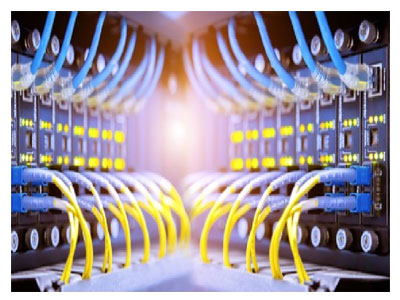Key Takeaway
Energy-saving techniques in Industrial Ethernet networks focus on reducing power consumption while maintaining performance. One common method is using Energy Efficient Ethernet (EEE), which lowers power usage by reducing the data transmission rate during periods of low activity. Managed switches with smart power management features can also optimize energy use by shutting down unused ports.
Another effective technique is network segmentation. By organizing the network into smaller segments, you can minimize unnecessary data traffic and reduce the workload on devices. Using high-efficiency cables and hardware with lower power requirements also contributes to energy savings. Regular maintenance, such as firmware updates, ensures devices operate efficiently. These techniques not only lower energy costs but also support sustainable and environmentally friendly operations in Industrial Ethernet networks.
Power Management Features in Modern Ethernet Switches
Modern Ethernet switches come equipped with advanced power management features designed to minimize energy consumption. These features allow switches to dynamically adjust power delivery based on network activity.
For example, some switches can disable unused ports or reduce their power output when no devices are connected. This is particularly useful in industrial environments where devices may not be continuously active. Additionally, managed switches often provide detailed power usage reports, enabling operators to identify and address inefficiencies.
Switches with built-in timers can schedule power delivery to specific devices, ensuring they only consume energy when needed. For instance, a sensor array might only require power during specific production cycles, and switches can automate this process.
By leveraging these power management capabilities, industries can significantly reduce the energy footprint of their Ethernet networks without compromising performance.

Implementing Energy-Efficient Ethernet (EEE) in Industrial Networks
Energy-Efficient Ethernet (EEE) is a technology specifically designed to reduce energy consumption in Ethernet networks. It works by lowering the power usage of devices during periods of low activity.
EEE achieves this through techniques like Low Power Idle (LPI), which puts Ethernet links into a low-power state when no data is being transmitted. For example, in a production facility, if certain machines or sensors are idle, the Ethernet connection reduces its power consumption until activity resumes.
Implementing EEE across an industrial network requires compatible hardware, such as switches and network interface cards (NICs) that support the standard. Many modern devices are EEE-compatible, making it easier to adopt this energy-saving technology.
By integrating EEE, industries can maintain efficient communication while significantly reducing the overall energy usage of their Ethernet networks.
Reducing Idle Power Consumption in Ethernet Devices
Reducing Idle Power Consumption in Ethernet Devices
Optimizing Network Configuration for Energy Efficiency
A well-optimized network configuration can lead to significant energy savings. This involves structuring the network to reduce unnecessary traffic and ensure efficient communication between devices.
One technique is to implement VLANs (Virtual LANs) to segregate network traffic. By isolating traffic, VLANs minimize the workload on switches and routers, reducing their power consumption. Additionally, Quality of Service (QoS) settings can prioritize critical data, ensuring efficient bandwidth utilization and preventing congestion.
Dynamic routing protocols can also optimize energy use by selecting the most efficient paths for data transmission. This reduces the strain on network devices and minimizes energy wastage.
Finally, regular audits of the network help identify and remove unused or redundant connections. Simplifying the network architecture not only improves performance but also reduces energy demands.
Optimizing network configuration is a practical way to enhance energy efficiency without significant hardware investments.
Using PoE for Energy-Efficient Device Powering
Power over Ethernet (PoE) is a game-changer for energy-efficient device powering in industrial networks. PoE delivers both power and data over a single Ethernet cable, eliminating the need for separate power supplies.
This is particularly beneficial for devices like IP cameras, sensors, and access points. Instead of running multiple cables, PoE simplifies installations and reduces overall power infrastructure requirements. For instance, in a factory, PoE-enabled sensors can draw power directly from switches, streamlining the network and conserving energy.
Advanced PoE technologies, such as PoE+, provide higher power levels while maintaining efficiency. Additionally, managed PoE switches allow operators to monitor and control power delivery to individual devices, ensuring optimal energy use.
By leveraging PoE, industries can simplify their network setups, reduce energy costs, and maintain high performance in their Ethernet networks.
Conclusion
Implementing energy-saving techniques in Industrial Ethernet networks is essential for reducing costs and supporting sustainability. From utilizing power management features in switches to adopting PoE and EEE, these strategies ensure efficient energy use without compromising performance.
By optimizing configurations, reducing idle power, and leveraging modern technologies, industries can build greener and more cost-effective networks that align with both operational and environmental goals.
